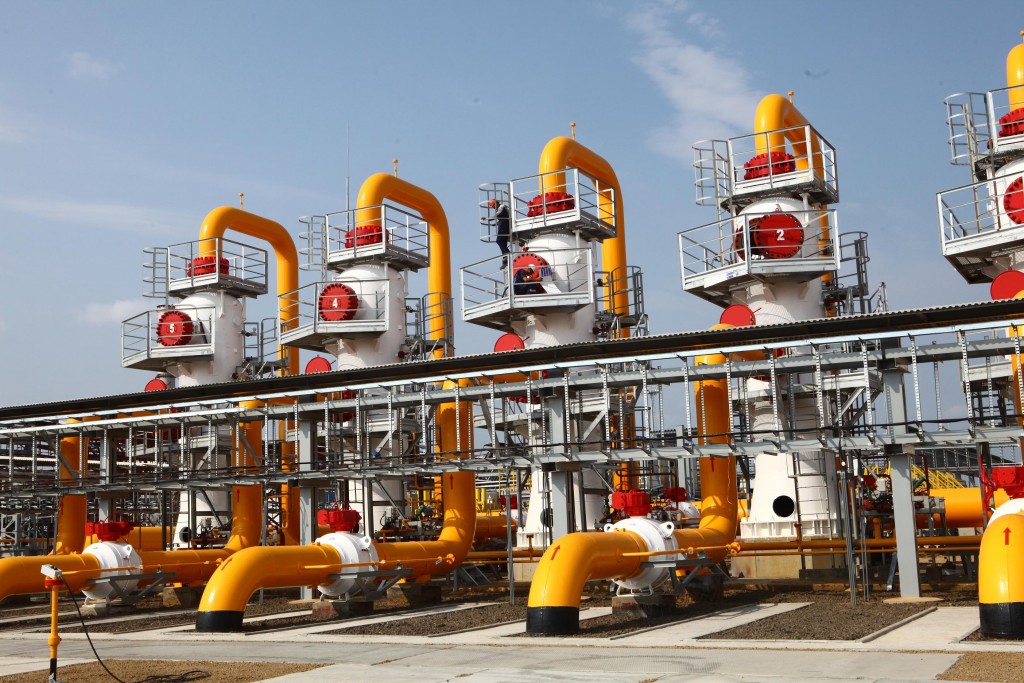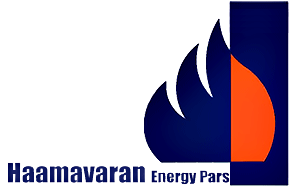Compressor Stations
Natural gas is highly pressurized as it travels through an interstate pipeline to expedite the flow of gas. To ensure that the natural gas flowing through any one pipeline remains pressurized, compression of the natural gas occurs periodically along the pipe. This is accomplished by compressor stations, which are usually placed at 40- to 100-mile intervals along the pipeline. The
natural gas enters the compressor station, where it is compressed by either a turbine, motor, or engine.
Turbine compressors gain their energy by using up a small proportion of the natural gas that they compress. The turbine itself serves to operate a centrifugal compressor, which contains a type of fan that compresses and pumps the natural gas through the pipeline. Some compressor stations are operated by using an electric motor to turn the same type of centrifugal compressor.
This type of compression does not require the use of any of the natural gas from the pipe; however, it does require that a reliable source of electricity be located nearby. Reciprocating natural gas engines are also used to power some compressor stations. These engines resemble very large automobile engines, and are powered by natural gas from the pipeline. The combustion of the gas powers pistons on the outside of the engine, which serve to compress the natural gas.
In addition to compressing natural gas, compressor stations usually contain some type of liquid separator, much like those used to dehydrate natural gas during its processing. Usually these separators consist of scrubbers and filters that capture any liquids or undesirable particles from the natural gas in the pipeline. Although natural gas in pipelines is considered a dry gas, it is not uncommon for a certain amount of water and hydrocarbons to condense out of the gas stream while in transit. The liquid separators at compressor stations ensure that the natural gas in the pipeline is as pure as possible, and usually filter the gas prior to compression.
Compressor stations are powered by compressors that are each rated at several thousand horsepower (hp). The stations contain valves, pipes, and control systems that monitor the functioning and operating parameters of the system. Most compressor stations are fully automated. Figure 1.2-2 provides an aerial view of a natural gas pipeline compressor station along a major transmission pipeline system. The compressors are typically housed in a metal building with pipe appurtenances and other critical elements above ground. All electrical fittings within the metal building are explosion-proof. Figure 1.2-3 shows a close-up of a reciprocating compressor, which is typically housed in a metal building along the pipeline. These stations are monitored or controlled by supervisory control and data acquisition (SCADA) systems.
Based on Plats Power Map data (2005), the average size of an interstate compressor station in the western states is around 13,000 hp, with large variations in size found throughout the western region.
Compressor station facilities are generally sited on 15 to 22 acres of land and include an all-weather gravel access road, the compressor building, cooling fans, a control building, and possibly two or three small auxiliary buildings. The compressor building as well as the piping and equipment are acoustically designed to keep noise to a minimum (Table 1.2-1) and are constructed using explosion-proof electrical fittings.
A natural gas compressor station generates noise on a continuous basis during operations.
However, as Table 1.2-1 shows, the noise levels attributable to operations of new compressor
stations would not result in significant effects on individuals nearest to the facilities. A typical compressor station houses the gas turbine compressor package as well as the instrumentation controls and equipment required to monitor and operate the engines and compressors.
Compressor stations are typically enclosed by a chain-link fence, and most have some type of additional security equipment such as cameras and motion sensors.
Natural gas piping, both aboveground and belowground, associated with the installation of the interconnections, metering stations, and pigging facilities at a compressor station are installed and pressure-tested using methods similar to those used for the main pipeline. After testing is successfully completed, the piping is tied into the main pipeline. Piping installed below grade is coated for corrosion protection prior to backfilling. In addition, all below-grade facilities are protected by a cathodic protection system. Before being put into service, compressors, controls, and safety devices are tested to ensure proper system operation and the activation of safety mechanisms (including disaster automatic or manual shutdown), as necessary (CEC 2007).
Other major equipment installed at each site includes aerial gas coolers, fuel gas skids, the motor control center (MCC) and control building skids, logic control module (LCM) skids, and filter houses. The primary contractor typically works on concrete foundations; pipe fabrication; and pipe, equipment, and structural steel installation and instrumentation.
Subcontracted work includes piling; reinforcing steel; earthwork; electrical work; structural steel
fabrication; heating, ventilating, and air conditioning; insulation; pipe coatings and painting; and
pre-engineered buildings.
